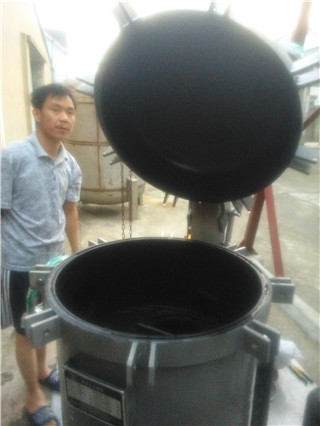
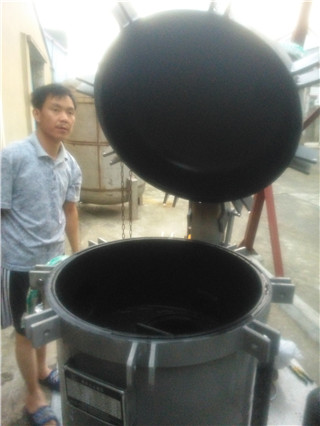 | 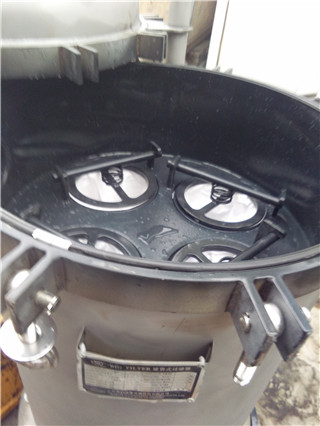 |
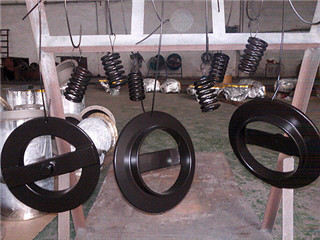 | 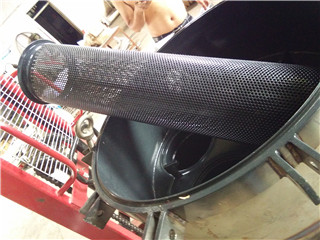 |
Fluoroplastics are some or all of the fluorinated alkane polymers which are polytetrafluoroethylene (PTFE), PERFLUOROPROPYLENE (FEP) copolymers, perfluoroalkoxy (PFA) resins, polytrifluoroethylene (PCTFF), ethylene trifluoroethylene copolymer (ECTFE), ethylene tetrafluoroethylene (ETFE), polyvinylidene fluoride (PVDF) and polyvinyl chloride (PVC).PVF).
Teflon
Commodity names are "Teflon", "Teflon", "Teflon", "Teflon", "Teflon", "4F". PTFE is a perfluoropolymer produced by free radical polymerization of tetrafluoroethylene. It has a linear molecular structure of Cma-CFZ repetitive unit and is a crystalline polymer with a melting point of about 631 C and a density of 2.13-2.19g/cC (g/cubic cm).PTFE has excellent chemical resistance with a dielectric constant of 2.1 and a low loss factor, which is stable over a wide temperature and frequency range.It has good mechanical properties from low temperatures up to 550V.
PTPE has high impact strength, but its tensile strength, wear resistance and creep resistance are worse than other engineering plastics.Glass fibers, bronze, carbon and graphite are sometimes added to improve their special mechanical properties.It has a lower coefficient of friction than almost any other material and a high oxygen index.
PTFE can be made into granules, coagulated fine powder (0.2 micron) and water dispersions.Granular resins are used for compression and plunger extrusion; fine powders can be pasty extruded into thin-walled materials; dispersions can be used as coatings and impregnated porous materials.Pure PTE products sold in the US market are Auimont USA AI-goflon, DU POut Teflon, ICI AInericas Inc FI, HOechst Celanese HOSaflon.
PTFE has a very high melt viscosity which hinders the use of commonly used melt extrusion or molding techniques.The molding and extrusion methods of granular PTFE are similar to those used for powdered metals and ceramics - compression followed by high-temperature sintering; fine powders are mixed with processing aids (e.g. naphtha) to form pastes, then extruded into thin-walled materials under high pressure, then heated to remove volatile processing aids, and finally sintered.
Polyperfluoroethylene propylene
FEP is the copolymerization of tetrafluoroethylene and hexafluoropropylene.
FEP has a melting point of 580 and a density of 2.15g/CC (g/cubic cm). It is a soft plastic with lower tensile strength, wear resistance and creep resistance than many engineering plastics.It is chemically inert and has a low dielectric constant (2.1) over a wide temperature and frequency range.This material does not ignite and prevents the spread of flame.It has excellent weather resistance and low coefficient of friction and can be used from low temperature to 392.The material can be made into granular products for extrusion and molding, used as fluidized bed and electrostatic finishing powders, and also into water dispersions.Semi-finished products include film and plate.Rods and single fibers.FEPs sold in the US market include the Teflon brand of DUIPont, the Neoflo brand of Daikin, and the IHoustaflow brand of Hoechst Celanese.Its main use is to make interior villages of pipes and chemical equipment, surface layers of drums and various wires and cables, such as aircraft hook lines, boost cables, alarm cables, flat cables and well logging cables.FEP films are already seen as thin coatings for solar collectors.
Soluble PTFE
PFA is a perfluoroalkoxy resin modified with PTFE up to 260 degrees.
PFA resins are relatively new fusible processable fluoroplastics.
PFA has a melting point of about 580 and a density of 2.13 to 2.16g/cc (g/cm3).PFA is similar to PTFE and FEP, but its mechanical properties are slightly better than FEP at temperatures above 302 C. It can be used at temperatures up to 500 and has chemical resistance comparable to PTEF.PFA products come in the form of granular products for molding and extrusion, powdery products for rotational molding and coatings, and semi-finished products are films, plates, bars and pipes.The PFA resins sold in the US market are Teflon from DUPOut, Neoflon from Daikin, Hthen from Ansimont and Hostafl from HOechst Celanese.PFA is similar in use to FEP.
Polytrifluorovinyl chloride
PCTFE is a product of radical-initiated polymerization of trichloroethylene with a linear main chain consisting mainly of a repetitive CF (cl) - CF unit.
PCTFE is a crystalline polymer with a melting point of 425 and a density of 2.13g/cc (g/cm3).
PCTFE is inert to most active chemicals at room temperature and can be dissolved by a few solvents above 212 T or swelled by some solvents, especially chlorinated ones.PCTFE has excellent gas barrier capability and its water vapor permeability is the lowest among all transparent plastic membranes.Its electrical properties are similar to those of other perfluoropolymers, but its dielectric constant (2.3-2.Knife and loss factor are slightly higher, especially at high frequencies.PCTFE can produce thick (1/8 inch) optically transparent parts.
Although PCTFE can be processed by melting, it is difficult to process because of the high melt viscosity and the tendency of degradation.
PCTFE resin can be made into granules for molding and extrusion.Membrane thickness is 0.001 - 0.010 inches, can also be made into rods and pipes.PCFE resins sold in the US market are Kel-FI from 3M, Daiflon from Daikin and Acfon from AlliedlSignal.
Ethylene Trifluorochloroethylene Copolymer
ECTFE resin is an alternating copolymer of ethylene and trichloroethylene 1:1 with a melting point of 464 and a density of 1.68 g/cc (g/cubic cm).
The material has good properties from low temperature to 330T, and its strength, wear resistance and creep resistance are much higher than those of PTEE, FEP and PFA.It is resistant to most corrosive chemicals and organic solvents at room and high temperatures.Its dielectric constant (2.6) is low and its performance is stable over a wide temperature and frequency range.ECTFE does not ignite and prevents flame spreading and decomposes into hard carbon when exposed to flame.
ECTFE can be made into granules for molding and extrusion as well as powder products for rotational molding, fluidized bed finishing and electrostatic finishing.It can be processed into foam product by chemical foaming method in traditional extrusion equipment, and should not be applied in the field of computer-used electric wire.Semi-finished products are films, plates, tubes and single fibers.Ausimont USA sells ECTFE under Halar.
In the field of wires and cables, the most important applications are those for boosting cables and cables for public transport vehicles.Fire alarm cable, anode protection cable.Injection products include tower packing, Q&H pump parts, plug-in, wire terminal, filter housing.ECTFE pipes are used with optical waveguide sleeves, unbraced pipes, steel pipes and reinforced plastic pipes.
ECTFE coatings and villages prevent metal from being eroded by the environment.Membrane applications have applications in battery and isolation.Single fiber applications include oil mist eliminators, braided sleeves, and filter fabrics.The wide (48in) ECTFE sheet, backed by fiberglass, can be used as lining for tanks with high chemical resistance and strength requirements.
Ethylene-Teflon Copolymer
ETFE is an alternating copolymer of ethylene and tetrafluoroethylene 1:1.ETFE has a melting point of 518F and a density of 1.70g/CC.ETFE is a tough material with high impact resistance and mechanical properties from low temperature to 356F.Chemical, electrical and weathering resistance are similar to ECTFE and similar to perfluoropolymers.Exposure to flame causes the polymer to melt and decompose.ETFE can be made into granules for extrusion and moulding, and powders for rotational moulding, fluidized bed and electrostatic finishing.Semi-finished products are films, rods, tubes and single fibers.ETFE sold in the US market includes the Tefzel brand of Du Poutl, the Hyflon brand of Ansimont USA, and the Neoflon brand of Daikin.Applications for wires and cables include aircraft hook lines, public transport vehicles and backboards on computers.Injection products include components for pumps, booths and other chemical equipment, packaging, tower packing, and electrical parts.
Polyvinylidene fluoride
PVDF is a high molecular weight polymer of vinylidene fluoride. It is a crystalline material with a melting point of 338F and a density of 1.78g/CC.Its strength, wear resistance and creep resistance are much higher than those of PTFE, FEP and PFA; it is resistant to most chemicals and solvents, as well as oxidants such as liquid Australian and Australian salt solutions; it has good weather resistance and does not burn in the air; it has high dielectric constant (8-9) and loss factor compared with other fluoroplastics; and it has good performance in the temperature range of 148-302 F.PVDF can be made into powder, granule and dispersion systems (dimethyl phthalate and diisobutyl ketone contain 44% resin).It can be extruded, injection moulded, transfer moulded, or coated with dry powder or dispersion spraying technology. Semi-finished products include films, plates, rods and single fibers.PVDE sold in the US market includes the Kpor brand of AtOChem Inc, the Soef brand of Sovay, the Neoflon brand of Daikin and the Hylar brand of Ansimont.
Copyright © 2018 Shanghai Shuangqi fluid separation technology Co., Ltd All Rights Reserved.
Email:121586348@qq.com Powerd by:
PEERHI